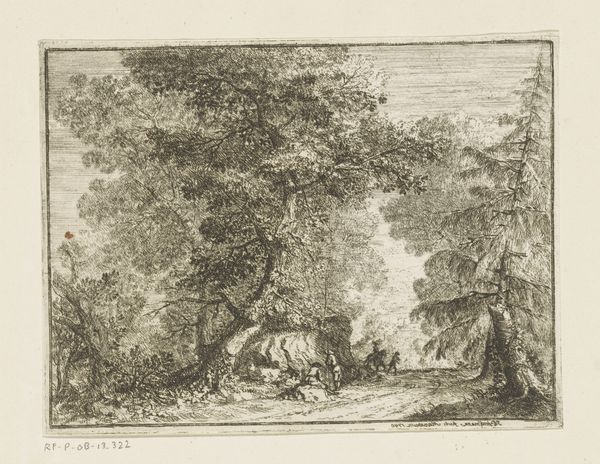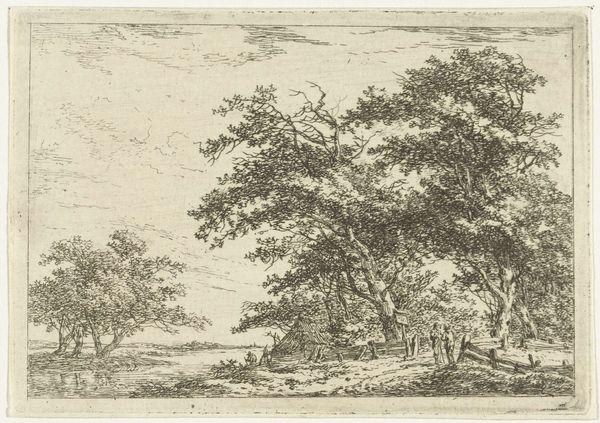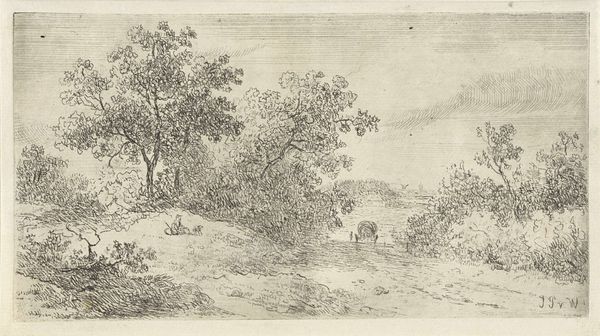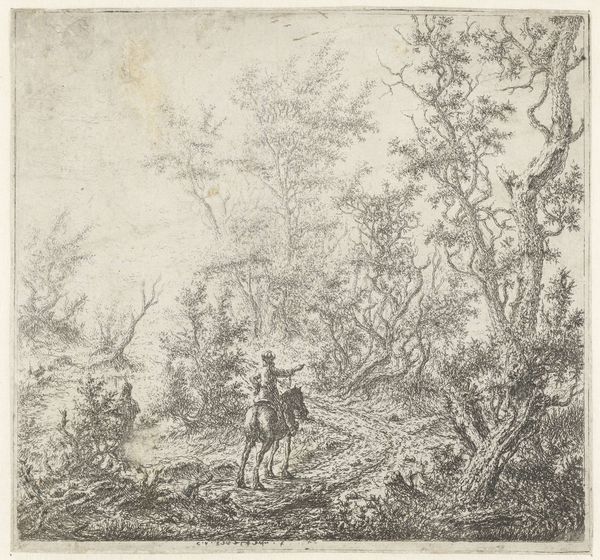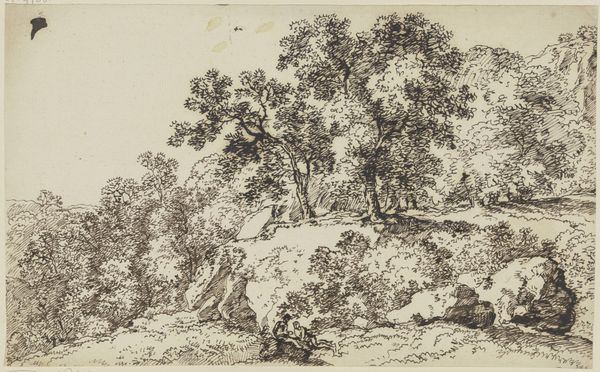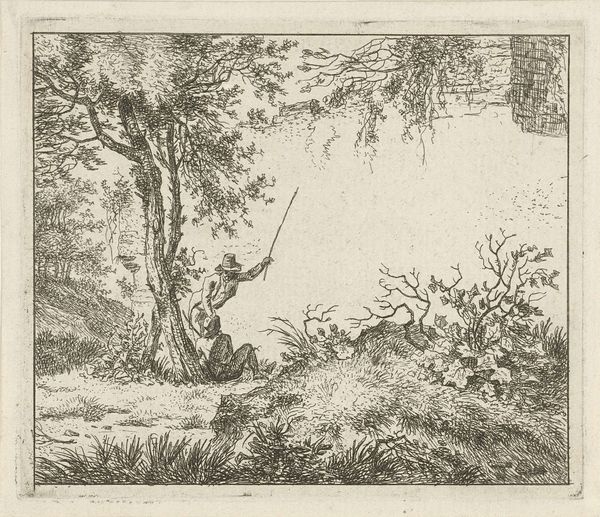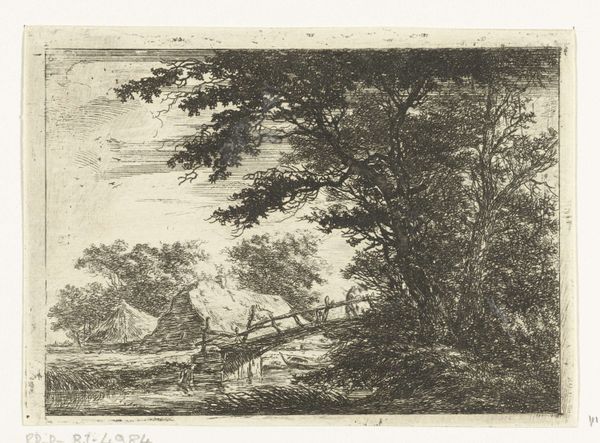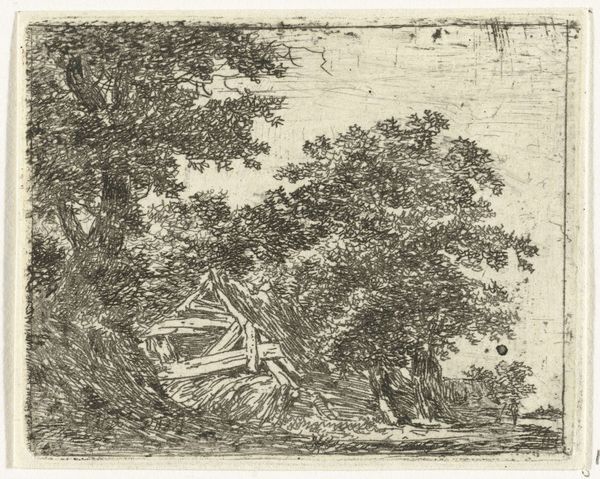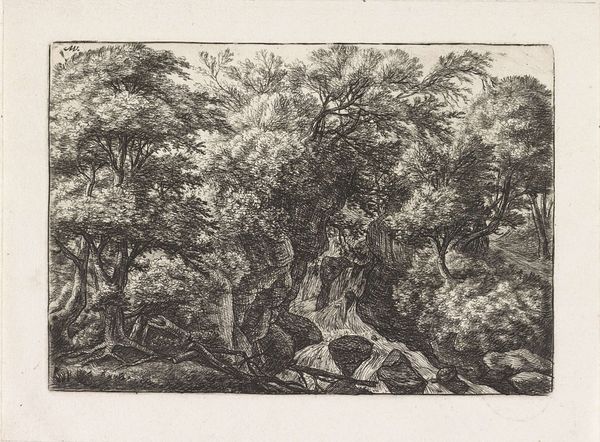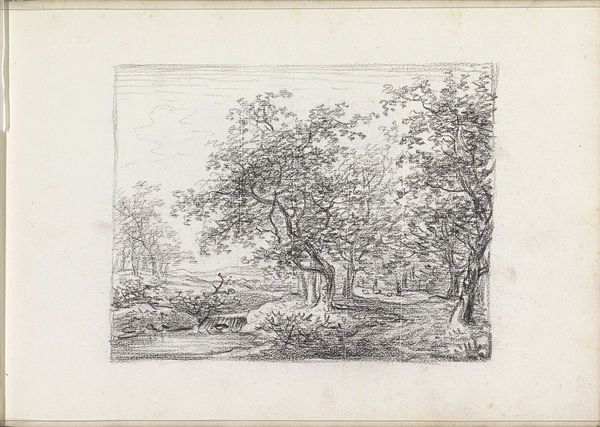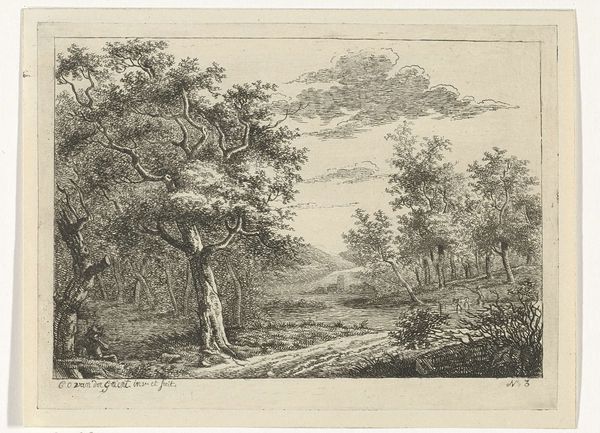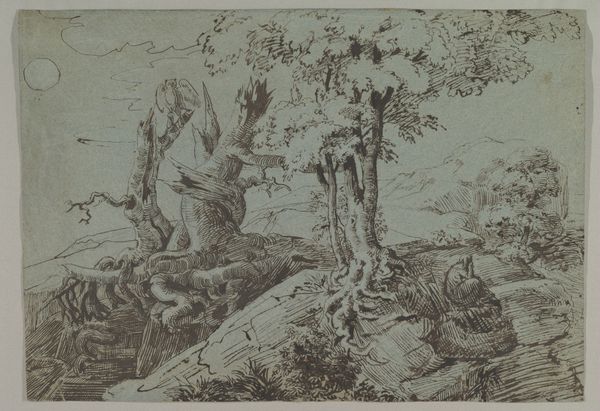
drawing, etching
#
drawing
#
etching
#
landscape
#
figuration
#
romanticism
#
line
Dimensions: height 49 mm, width 84 mm
Copyright: Rijks Museum: Open Domain
Curator: What strikes me immediately is how overwhelmingly intricate this etching is. The density of the lines almost obscures the scene. Editor: Indeed. This is "Angel and Woman in a Landscape," created in 1841 by Rodolphe Bresdin. His detailed technique evokes a sense of mystery, almost like glimpsing into another world. I’m drawn to that tension between the divine and the everyday. Curator: It definitely feels otherworldly, like a dreamscape caught in monochrome. And the scale – quite small, I imagine? It intensifies the effect, almost like holding a secret. The lines practically vibrate, suggesting both serenity and turmoil, no? How do you read the visual language, what emotional, cultural, or psychological resonance does that "angel" figure hold for you? Editor: Well, angels have long functioned as intermediaries, messengers between the heavens and earth. Here, though, that relationship feels... complicated. The angel isn't offering clear guidance or solace, just sort of exists, passively overseeing a somewhat wild scene. There’s something very Romantic about it. That resonates with its date. It’s of its time. Curator: Precisely. Bresdin's work exists within a Romantic framework, absolutely, but pushes boundaries of figuration and its ties to the sacred. There is a rejection of Enlightenment rationalism visible in the intense detail—but perhaps an echo of patriarchal structures, a white winged 'savior' still presiding. The figure and implied narrative feels... exclusionary to me. Is that intentional commentary, an implicit questioning? The role of women—who are often viewed as subordinate—certainly has an arc alongside Romanticism's evolving narratives about revolution, too. I'd argue the historical weight demands interrogation and contemporary interpretations beyond what first meets the eye, if you will. Editor: That's a compelling read, for sure, making me reassess the power dynamic that initially struck me as rather neutral! This almost off-hand treatment of the 'divine messenger' can itself, now that you've pointed it out, become part of a social narrative on shifting beliefs and class/gender struggle. Even in seemingly 'harmless' natural landscapes, visual symbols play complex social roles. Curator: Absolutely! Hopefully, this examination provides not just an encounter, but tools for interrogation of all that this imagery might mean. Editor: Right, to see an etching less as static representation, more as visual marker in ongoing social conversations! Thank you for sharing that point of view.
Comments
No comments
Be the first to comment and join the conversation on the ultimate creative platform.

